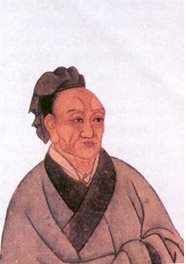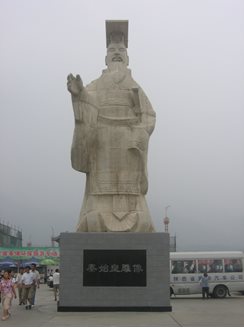Evaluating the First Emperor
The Grand Historian
As punishment, Sima Qian chose the ‘lesser’ penalty of castration so he could finish his father’s work. Sima Qian’s Shiji (history of China) drew on many sources. While many historians praise the reliability of his mammoth 130-volume work, there are some that suggest he had a hidden motive. Read some extracts from Sima Qian’s history of China. Do they praise Qin Shi Huang or are they critical of him? Or do they simply record facts? Other viewsA lot of what we know about Ancient China comes from Sima Qian’s writing in the Shi Ji. But this text also includes the statements of other people who lived around the time of the Qin Shi Huang. Again, consider whether these views are positive or negative and if there might be reasons for this. |
Modern viewsRecent historians and writers have given a variety of impressions of Qin Shi Huang.
|



